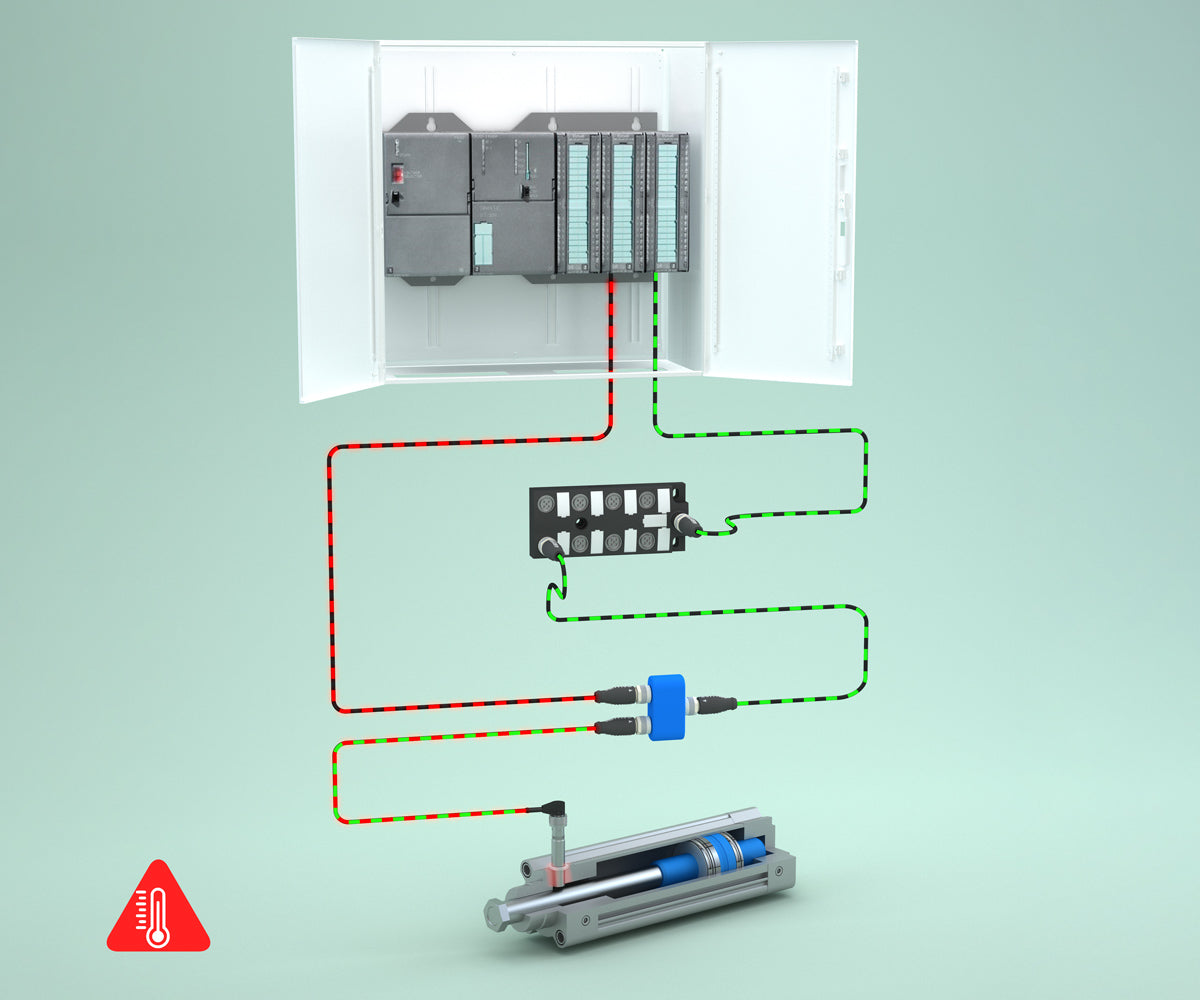Summary
Industrial equipment designers implementing condition-based monitoring (CBM) in legacy automation projects need to add additional functionality without significant reprogramming. Sensors with on-board decision-making and simple binary outputs for driving alarm or shut-down routines are essential. Rugged, multi-mode Smart Sensors from Contrinex trigger high-speed standard input/output (SIO) alarm signals, addressing existing routines on a central PLC without needing to disturb the legacy code.
Customer Application
Condition-based monitoring is an essential element of a maintenance engineer’s toolkit, and is widely implemented in modern automotive projects where fieldbus architecture provides scalable plant-wide communications. Older, PLC-based systems typically lack the flexibility to add additional functionality without significant reprogramming. This is not only costly but also increases the risk of unwanted consequences that often accompany legacy code changes.
During an upgrade of an automated production line that relies heavily on pneumatic actuators and cylinders, designers propose to install multi-mode sensors to support the implementation of CBM. Identifying suitable sensing devices is only one aspect of the solution, as there is an overriding need to minimize (or avoid entirely) any changes to the core PLC code.
Modern multi-mode sensors generally feature industry-standard communications protocols that simplify installation and commissioning in new-build systems; however, these devices often lack the event-based outputs needed for effective CBM. Here, integrators need local, sensor-based decision-making with simple binary outputs to drive pre-programmed routines in the central PLC. Availability, proven capability and cost-effectiveness are key factors when identifying and specifying suitable sensing devices.
Customer Solution
By specifying Contrinex Smart Sensors to replace existing sensors fitted to pneumatic cylinders, designers implemented a highly versatile, cost-effective solution to the problem. Smart Sensors, which offer multiple sensing modes in a single device, not only monitor process parameters, including piston speed and position, but also record the cumulative event-based data required for CBM. Critically, these sensors feature dual output channels, one of which is a high-speed standard input/output for immediate notification of time-critical events.
Mounted immediately adjacent to the piston travel path, these embeddable, metal-cased M12 Smart Sensors, which have a nominal 6-mm sensing distance for carbon steel, are highly robust and resistant to vibration and mechanical shock. Capable of measuring both lateral and axial displacement directly, these devices also record cumulative data for travel distance, operational cycle count and temperature, with customer-specific alarm thresholds for each parameter programmed into the sensor memory.
Any measurement that exceeds the relevant ultimate limit triggers a high-speed binary SIO signal that is transmitted directly to an appropriate input module on the central PLC. This configuration bypasses the slower, fieldbus-based communication channel used to transmit routine process data, and the critical benefit of the arrangement is the avoidance of any modification to the core PLC programming. Existing alarm or shut-down routines are addressed directly by the SIO signal, without the need to disturb the legacy code.
IO-Link connectivity, standard across the range, provides an industry-standard interface to the PLC for routine process data. During initial calibration, each sensor’s configuration is stored automatically on the local IO-Link Master; this allows plug-and-play replacement of sensors should the need arise, without any loss of functionality and without any need for recalibration. Designed with the needs of OEMs and system integrators in mind, Smart Sensors provide an unobtrusive fit-and-forget solution.
Customer benefits
- Embeddable inductive Smart Sensors offer multiple sensing modes in a single device, allowing fit-for-fit replacement of existing devices
- Cumulative data for condition-based maintenance, including temperature and operating-cycle count, is recorded in on-board data storage
- The Smart Sensor’s dual-channel capability enables a high-speed binary SIO output to be triggered by an event-based exception
- Existing alarm or shut-down routines are addressed directly by the SIO signal, without the need to disturb the legacy PLC code
- Individual device configurations are stored locally, allowing plug-and-play replacement of sensors when needed
- Industry-standard IO-Link connectivity provides a single interface to the machine control system for process data
- Proven technology ensures highly reliable fit-and-forget operation with no manual intervention
Product specific advantages
- Robust, metal-cased inductive Smart Sensors are ideal for easy integration
- Multi-channel monitoring circuitry allows users to define multiple customized output thresholds
- Sophisticated sensing electronics deliver high-precision multi-mode measurements
- High-speed device-to-device communication enables decentralized data-processing and decision making
- Smart Sensors are individually shielded and EMC immune, eliminating interference when multiple devices operate in close proximity
- Dedicated service-data blocks hold device-specific data including product ID, location and serial number
- Visible LED indicators enable sensors to self-identify on demand, simplifying commissioning and trouble-shooting routines
- Industry-standard -25°C to +70°C operating range
